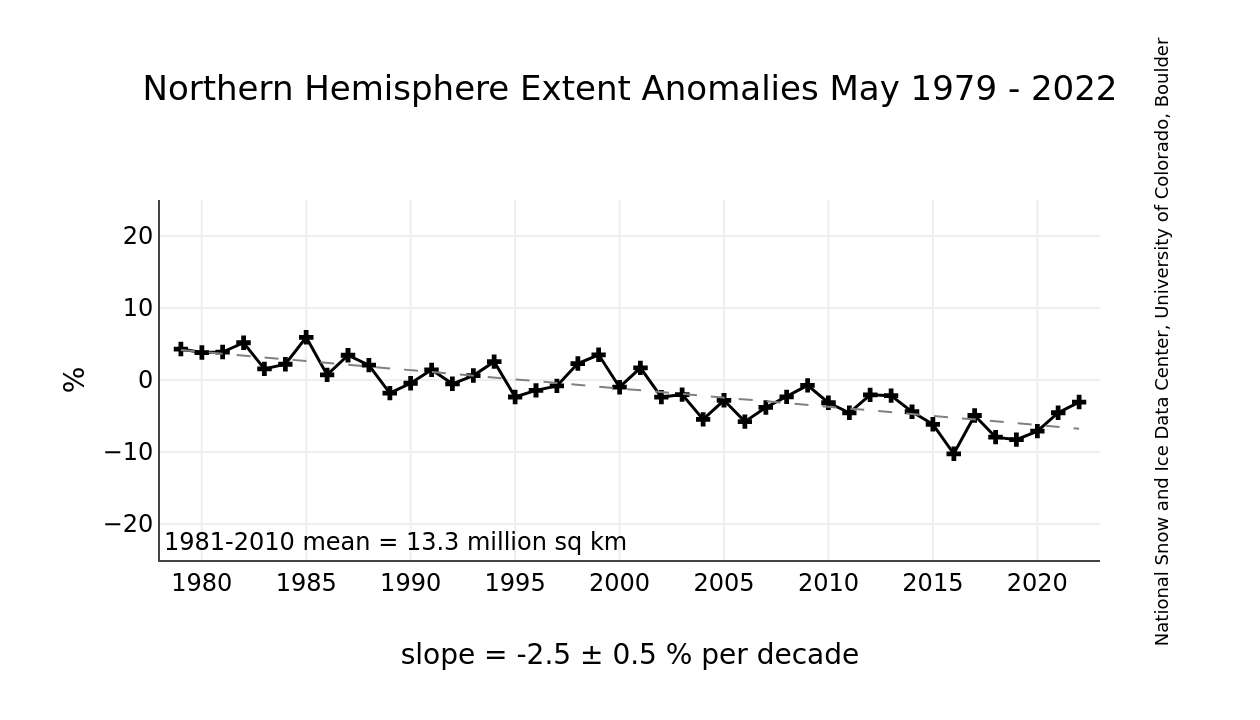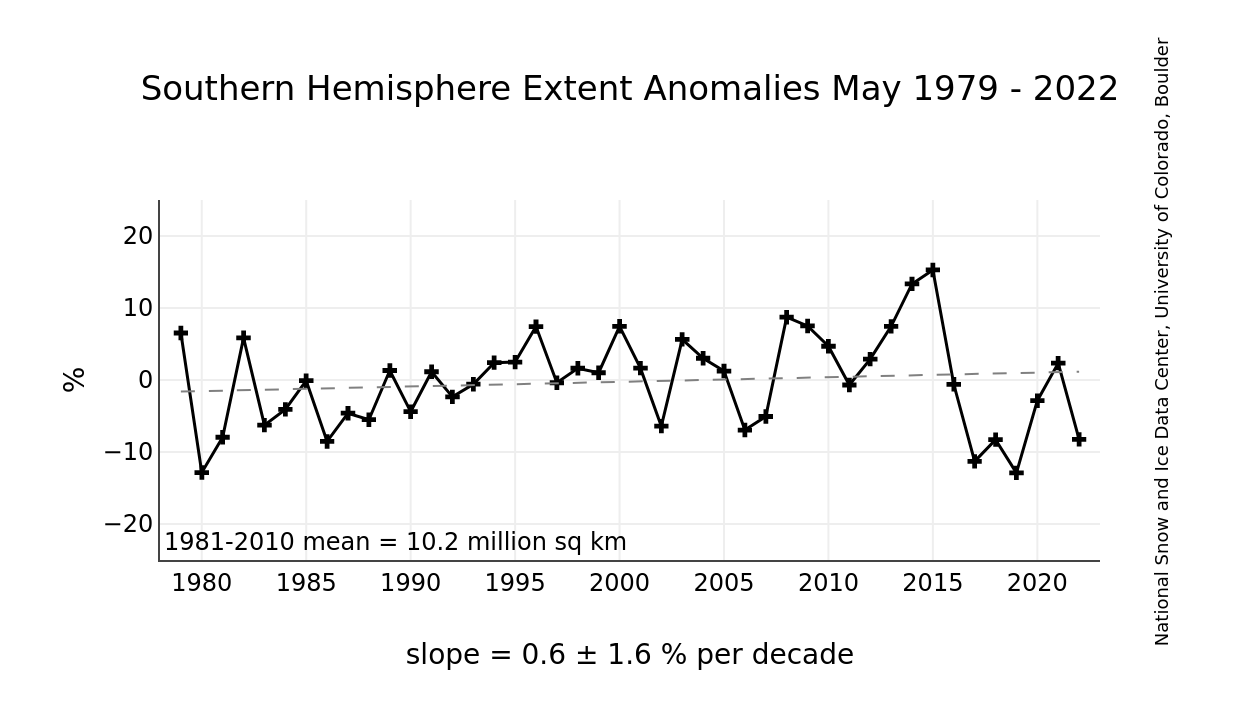
Join our Beta Community!
Thank you for your interest. Register here for the latest updates.
Your email is safe with us. We won't spam.

Sea ice is simply frozen ocean water. It forms, grows, and melts in the ocean. In contrast, icebergs, glaciers, ice sheets, and ice shelves all originate on land. Sea ice occurs in both the Arctic and Antarctic. According to NSIDC (National Snow and Ice Data Center), on an average, sea ice covers about 25 million square km of the Earth, or about two-and-a-half times the area of Canada.
These are main reasons why sea ice is important:
The monthly Sea Ice Index provides a quick look at Arctic-wide / Antarctic-wide changes in sea ice (ocean area where there is at least 15% sea ice coverage). It is a source for consistently processed ice extent and concentration images and data values since 1979.
This graph shows monthly ice extent anomalies plotted as a time series of percent difference between the extent for the month in question and the mean for that month based on the January 1981 to December 2010 data. The anomaly data points are plotted as plus signs and the trend line is plotted with a dashed grey line.

Source: NSIDC, Treehugger, NSIDC Data
This graph shows monthly ice extent anomalies plotted as a time series of percent difference between the extent for the month in question and the mean for that month based on the January 1981 to December 2010 data. The anomaly data points are plotted as plus signs and the trend line is plotted with a dashed grey line.

Source: NSIDC, Treehugger, NSIDC Data

We love to hear about other people who are striving to make a positive difference to our planet. We hope you enjoy reading them.